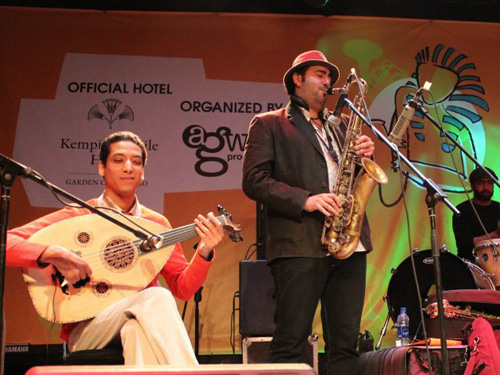
In Shebin al-Qanater, Qalyubiya, Egyptian farmer Magdy al-Sayyed Bayoumy picks up a reed he gathered from his farm. He sits in a small rooftop room, trimming that reed into a flute. Next to him sits his son, who has followed in his father’s footsteps.
Though a very simple item, the reed is a vital element for producing one of the most important instruments in an oriental orchestra, more important than some of the intricately designed instruments found in a musical ensemble.
After trimming the reed, Bayoumy straightens it by applying it to fire. He uses a pencil to mark the distance between each of the flute’s finger holes before puncturing them with a chisel. He ends the task by marking his initials on the flute with a knife, before testing the adequacy of the tones coming out.
Bayoumy’s grandfather was a maker of arghuls, a traditional Egyptian instrument that largely resembles the flutes Bayoumy makes today.
‘My father learned the basics from his father,” he says. “It took him 20 months,” he added, noting that he was the only one among his brothers to carry on his father’s legacy.
He voices his dislike of any other material but local reeds for the contruction of the flute. “The material for Egyptian flutes is local reeds, there is nothing called Turkish or Indian material,” he says.
Edited translation from Al-Masry Al-Youm




